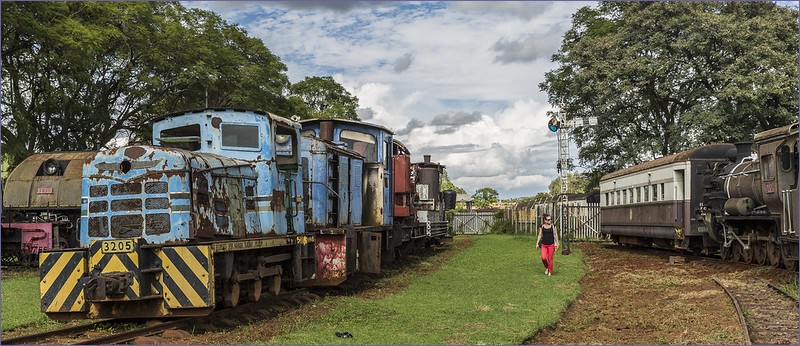Railway in Kenya generally refers to two railway networks: metre gauge railway network (MGR) and standard gauge railway network (SGR). Train travel in Kenya is possible between Nairobi and largest cities in Kenya. Trains in Kenya are operated by Kenya Railways Corporation (KRC) founded in 1977. Chinese investments in Kenya are underway.
Last updated: 10.03.2024
History of the railways in Kenya started with construction of a railway line from the port of Mombasa to the port of Kisumu on Lake Victoria, from where goods was transported by ferry to Uganda (930 km). Construction of the line was completed at the end of the 19th century and the line was was known as the “Uganda Railway”. During the 20th century, several shorter branches were built along the line. All lines were built to a 1000 mm gauge.
Train travel in Kenya – metre gauge railways
The Kenyan metre railway network is very neglected, the narrow-gauge lines are in terrible condition, and there are only two passenger services. Railway lines are mainly used for freight transport. Narrow gauge long-distance trains in Kenya run only once a week.
Passenger trains run on the following routes:
Nairobi – Kisumu (Kisumu Safari Train) – an overnight train. It runs every Friday from Nairobi (departs at 1830hrs and arrives in Kisumu at 0630 hrs) and every Sunday from Kisumu.
Train stops at stations: Line Saba, Kibera, Satellite, Lenana, Dagoreti, Kikuyu, Muguga, Limuru, Uplands, Matathia, Kijabe, Longonot, Naivasha, Nakuru, Njoro, Molo, Elburgon, Fort Ternan, Londiani, Muhoroni, Miwani, Chemelil, Kibigori and Kibos.
Nairobi – Nanyuki – a daytime train. Train covers the distance of 177 km in approximately 8 hours. It’s a very slow train. Train is comprised of 1st class and economy class carriages. Train departs from Nairobi on Fridays only and from Nanyuki on Sundays only.
Train stops at stations: Makadara, Dandora, Kahawa, Ruiru, Kalimoni,Thika. Mitubiri, Makuyu, Maragua, Murang’a, Sagana, Karatina, Kiganjo, Naromoru.
Kenyan Railways Corporation – timetable, prices, additional information.
The branch line to Nanyuki is used mainly for transportation of fuel to Vivo Nanyuki depot, fertilizer, cereals, and livestock.
The railway line Gilgil – Nyahururu is operational but there are no trains.
The railway line Konza – Magadi is owned by by Tata Chemicals and it is used in the transportation of mined caustic soda from Magadi to the port of Mombasa.
Famous Lunatic Express train from Nairobi to Mombasa was ceased after standard-gauge railway line was put into operation in 2017.
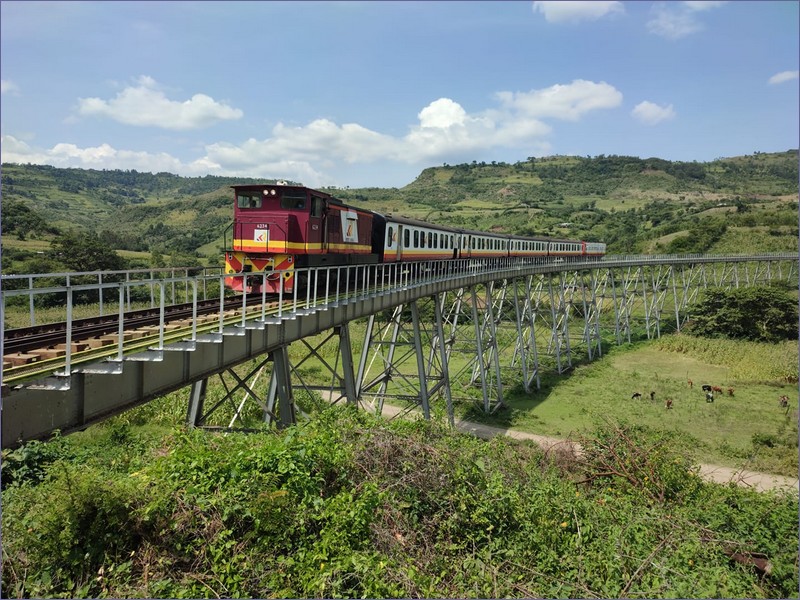
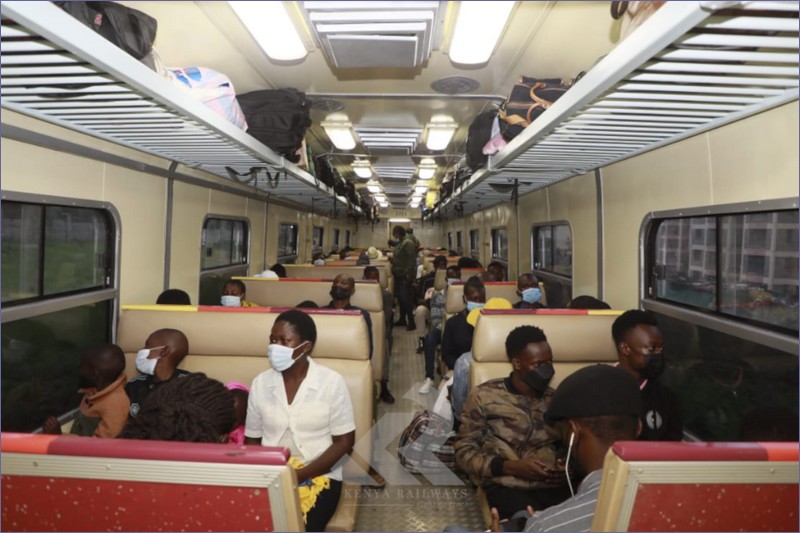
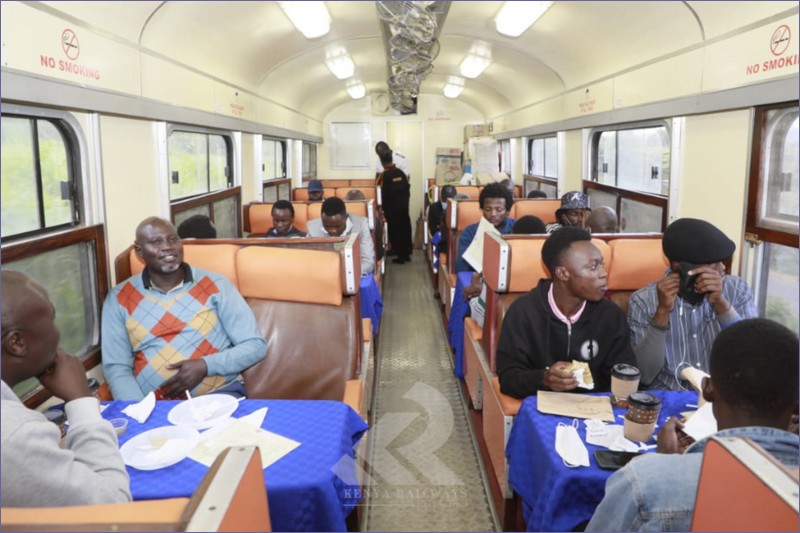
Train travel in Kenya – standard-gauge railways
The standard-gauge railway line between Nairobi and Mombasa was opened in 2017. There are three passenger trains on the route daily:
Inter-County train: departs both Mombasa and Nairobi Terminus simultaneously at 08:00 am every day. The train has scheduled stops at Mariakani, Miasenyi, Voi, Mtito Andei, Kibwezi, Emali, and Athi River stations.
Afternoon Express train: departs both Mombasa and Nairobi Terminus simultaneously at 3:00 pm and includes a stop over at Voi station.
Night train: departs both Mombasa and Nairobi Terminus simultaneously at 10:00 pm. This is a direct train without intermediate stops.
In addition the Suswa Leisure Train operates between Nairobi Terminus and Suswa station every Friday, Saturday and Sunday.
Nairobi Terminus is located about 15 km from the Nairobi Central Station in downtown of the city. Kenya Railways operate a commuter train which connects Nairobi Central station to the Nairobi Terminus.
Mombasa Terminus is located also about 15 km from the city center. There are shuttle buses between station and city center.
Suswa railway station is located in Narok county, 83 km away from Nairobi.
Daytime trains between Nairobi and Mombasa are brand-named Madaraka Express. Trains are comprised of new Chinese-made carriages – passengers can choose between economy class and first class. The Madaraka Express covers 472 kilometers in approximately 4 hours and 45 minutes, which is a very good journey time. The Lunatic Express train covered route between two largest cities in Kenya in approximately 15 hours.
There is a security control before boarding the train.
Metickets – online tickets for Madaraka Express trains.
– Passengers should arrive at the train station not later than one hour before departure.
– Passengers should have original identification documents when booking over the
counter and during the journey.
– Bikes are not allowed on board.
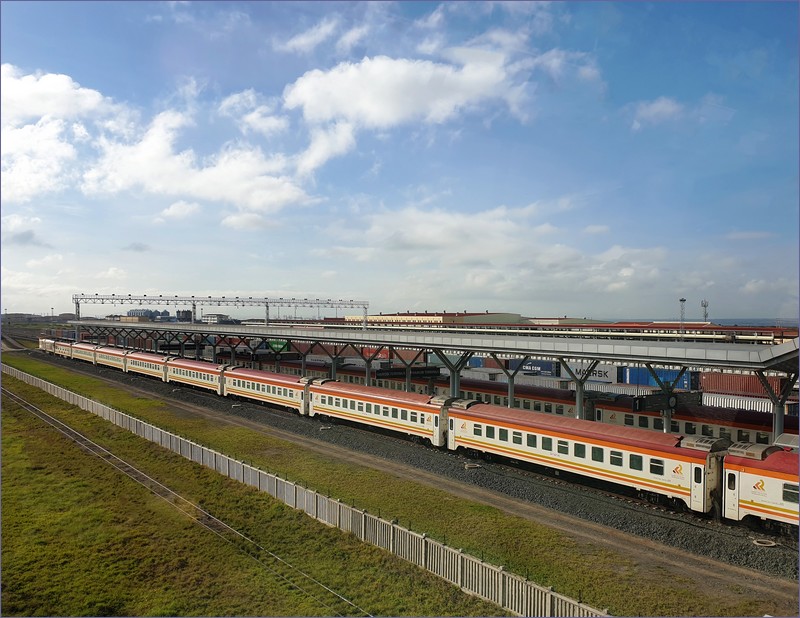

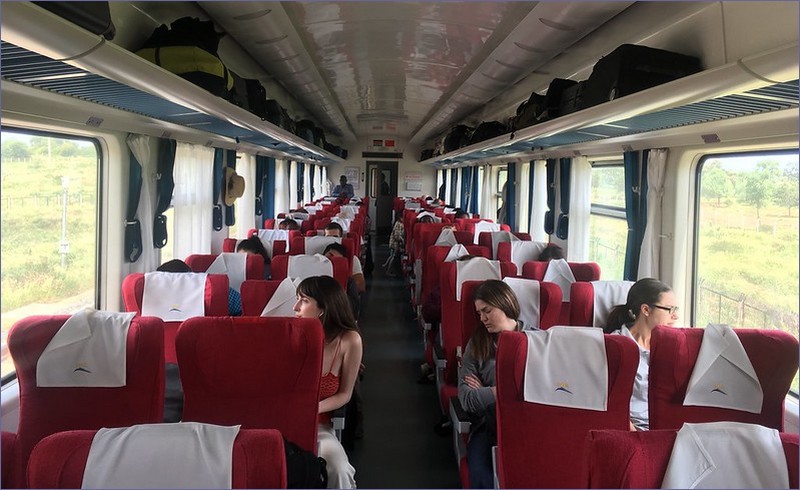
Trains in Kenya – commuter trains
There are commuter trains in Nairobi. Railway infrastructure in Nairobi was rehabilitated. New rapid transit system with an integrated transport service that involves and interconnection between the trains and buses was inaugurated in 2020. The lines were upgraded, coaches refurbished, new diesel multiple units acquired. Major railway stations and train stops were equipped with Park & Ride facilities, CCTV cameras and automated ticketing system.
Commuter trains in Nairobi are operated by Kenyan Railways. Trains run on the following routes:
Nairobi – Embakasi via Makadara, Donholm
Nairobi – Syokimau via Makadara, Nairobi Terminus
Nairobi – Liruru via Kibera, Dagoreti, Kikuyu
Nairobi – Lukenya via Makadara, Embakasi, Athi River
Nairobi – Ruiru via Makadara, Dandora, Mwiki, Githurai, Kahawa West
Trains start and end at Nairobi Central Station.
Suburban trains are composed of new diesel multiple units or diesel-hauled trains with a carriages.
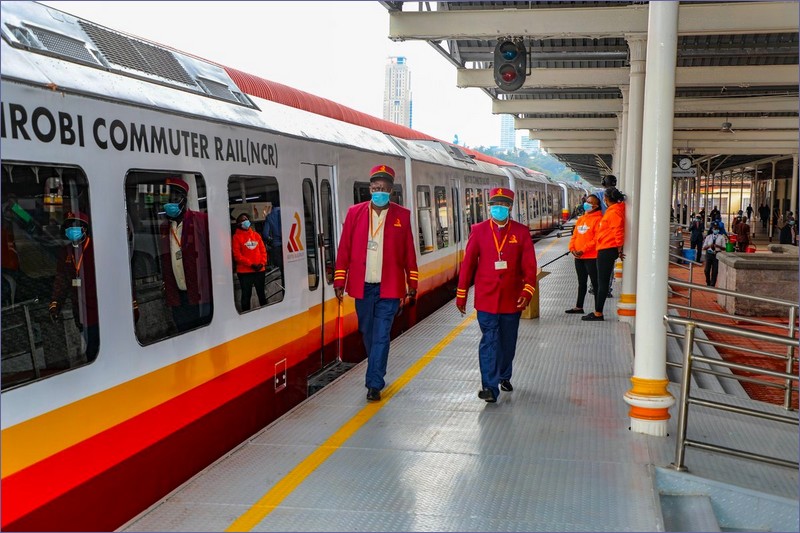
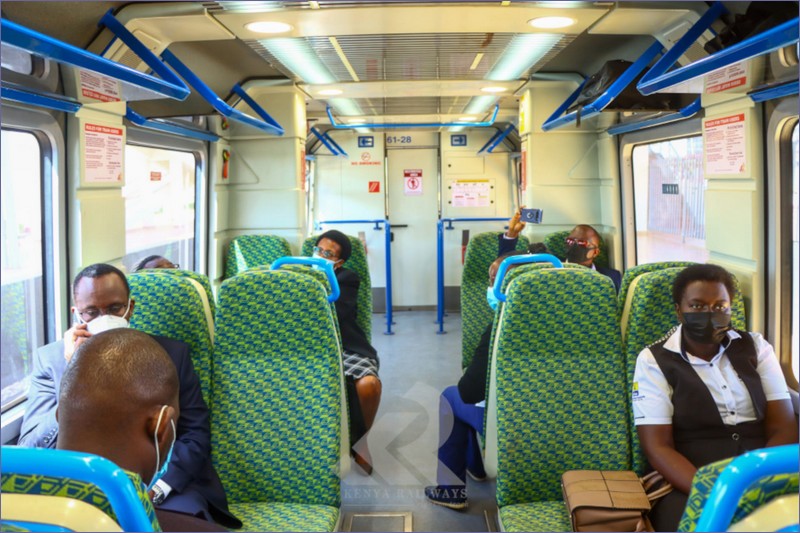
Railway museum in Nairobi
One of the biggest tourist attractions in Kenya is the small Railway Museum in the center of Nairobi. Although visitors rate the museum very well, it is not one of the most famous museums in the world.
The museum, opened in 1971, is located in a small building with an art gallery and several rooms with exhibits presenting the history of railways in Kenya.
An outdoor exhibition of old rolling stock is the most popular – mostly locomotives, visitors can also see historic passenger carriages.
Some locomotives are still in operation and on selected days there are demonstration rides of retro trains on a very short route.
Related articles:
